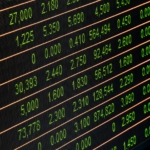Economic update – June 2022
By Infocus Author
In this month’s update, we provide a snapshot of economic occurrences both nationally and from around the globe.
Key points:
– China is stimulating its economy as Covid case numbers decline
The Big Picture
We’ve had a turbulent couple of months on equity markets – to say the least! The new source of angst was from the Federal Reserve (“Fed”). Not only did they institute a big (0.50%) rate hike but they talked really aggressively about what might come next.
This policy aggression – or “hawkishness” – spooked bond markets. Yields on longer dated bonds e.g. 10 year Government bonds, jumped up sending the prices of high growth stocks – such as those of large mega-tech companies – tumbling in some cases. That took down the tech-based Nasdaq index to a level just shy of -30% from its December 2021 high, though there was a lesser impact on the S&P 500 because of its inclusion of all of the other industry sectors. The Dow (Jones Industrials index) was much less affected. For similar reasons our market falls were cushioned by our relative lack of a tech sector.
It is really important for investors to understand what is motivating the Fed and many market analysts. Some people have been talking about recession for some time but now the word “stagflation” has become more front of mind.
The term “stagflation” was coined in the mid-1960s in Britain by the then Chancellor of the Exchequer. It didn’t get mentioned again until 1970 and then became the word ‘du jour’ after the absolutely massive 1973 and 1979 OPEC oil price hikes. If you think recent oil price rises are big, check out what happened in 1973. Such a shock to the price system is called a “supply shock” because it is separate from the demand pressures that so often cause inflation.
Stagflation occurs when there is persistently high inflation coupled with sluggish (or worse) economic growth. The simplest explanation for those times and today is the following. A supply shock such as that caused to oil prices by OPEC in the 1970s or Russia in 2022, sparks high inflation. The central banks go out to quell inflation by hitting the monetary policy brakes – that is raising interest rates and possibly other measures.
If the cause of inflation cannot be cured by raising interest rates (as is the case for supply shocks), economic growth falls producing stagflation as inflation is largely impervious to the actions of central bank policy actions.
Conversely, when demand pressures are causing inflation, higher rates can cure an inflation problem. However, because of the long lags between raising rates and the real economy reacting, central banks can (and often do) cause recessions. It needs to be remembered that central bank monetary policy and Government fiscal policy (expressed through the budget) are blunt instruments hence policy mistakes are not unusual.
In the 1970s, when monetary policy supposedly came of age under the leadership of Nobel Laureate Milton Friedman, the lag between raising rates and economic response was thought to be 12 – 18 months. Since then, financial markets have become far more complex.
Many of us now rarely use cash for anything! Most of us didn’t have a credit card in 1970. There are now also complex derivatives in financial markets that allow the size of financial transactions to be scaled up enormously. We doubt if anyone currently has a good handle how long the monetary policy lag is, but we think it would at least be a few months and possibly a lot longer.
Few serious analysts would doubt that we have been experiencing supply shocks for a couple of years: oil price rises from OPEC activity; both energy and grain prices from the Russian invasion of the Ukraine; and the supply-chain problems largely coming out of China because of covid-related lockdowns. There is equally good reason to assume that these supply shocks will not respond to rate rises in the US or Australia.
Because of the past lockdowns in the US, Australia and Europe – and the change in work habits that followed – labour has been harder to find in some sectors as we strive to get back to normal. In a sense, a reduced post-covid-workforce could be thought of as a supply shock. But the wage increases we are seeing are in part demand related.
Workers are being bid away from home or other jobs and workers also want to be compensated for the higher prices they are undoubtedly facing. Higher rates make it more costly for business to raise capital and can put downward pressure on that part of the inflation problem.
For much of the first part of the supply shock inflation problem, the Fed chair, Jerome Powell, sensibly told everyone not to worry about it. But, as the problem got bigger, and seemingly some Fed members were playing political games by saying the Fed was behind the curve, Powell started to lose his nerve.
The problem with the US inflation data is that they focus most attention on the annual read comparing say this April’s prices with those in April 2021. In normal times there is no real problem in doing this. Indeed, there can be advantages in smoothing out statistical noise.
But when a big blip of a few months’ duration comes along, it takes months and months to notice inflation has really gone up. Equally, it takes months and months for the annual inflation rate to fall back to normal as the blip passes through the 12-month data window.
The US does also publish monthly data. The latest read for April was 0.3% for the headline rate and 0.9% for the core variant. There are two really important observations to make here.
Firstly, the 0.3% headline rate was the equal lowest in 12 months. Now, it could just be a statistical blip. We won’t know for at least a month or two, maybe more. Second, and more importantly, the core value was above the headline number. This means the volatile energy and food prices actually deflated in April! Could this be indicating the situation already be self-correcting?
Along came another variant of inflation later in May – the so-called PCE (Personal Consumption Expenditure) measure. The Fed has long-held it prefers this variant. The headline PCE monthly rate came in at 0.2% from 0.9% in the previous month. The core version was 0.3% for the second month in a row. This result could be more evidence that the supply shock impact is subsiding.
Now, energy, food and other prices are still high, but inflation measures a relative change from one month to the next. For inflation to remain high, energy prices and the rest would have to keep rising.
We are not yet prepared to make the call that inflation will naturally fall over the course of this year but we, and presumably the Fed, will be monitoring its progress very closely.
The current Fed funds (cash) rate is a range: 0.75% to 1.00%. The commonly held belief is that the neutral rate is somewhere around 2.5% in the US and 2% to 3% in Australia. When rates are below the neutral rate, policy is said to be accommodative (supportive of economic growth). When the cash rate is above neutral, the policy is considered contractionary (restrictive for economic growth).
The Fed has forecast they will make at least another two 0.5% hikes to the Fed funds interest rate before they start slowing the economy down. This is likely to occur at their next meeting in mid June and again in early August. By then it will be reasonably clear whether or not the inflation problem has started to self-correct and the modest hikes toward the ‘neutral’ interest rate may take some sting out of any demand-pull inflation.
The Reserve Bank of Australia (RBA) is well behind the US in raising it official cash rate. The RBA just lifted its rate from 0.1% to 0.35% in May. In its meeting minutes, it did say that it considered a bigger hike to 0.5% which would have brought its rate back to a scale calibrated in 0.25% increments which is has been historically.
Both the US and Australia have strong but not “hot” labour markets. We are cautiously optimistic that neither central bank will cause stagflation. They have stated that they are aware much of inflation is due to supply-side problems.
The Bank of England has stated that it thinks they will experience a recession in the UK starting this year. China has been cutting some rates and stimulating the economy to compensate for the Shanghai (and other industrial cities) Covid-lockdown.
The S&P 500 did temporarily enter bear-market territory in May by falling below 20% from the recent peak in early January. The ASX 200 didn’t quite fall 10% to mark a correction. Both indexes made substantial gains in the closing days of May. If inflation pans out as we think it might, both indexes could be well on the way to at least recovering some or all the drawdown experienced so far this year. Despite this more positive outlook there will still probably be a few big wobbles along the way as the Russian invasion of the Ukraine continues.
Bond yields have climbed over the year but even at their recent peak in early May they are not compelling competition for the dividend yields on stocks let alone the prospect of possible capital gains on equities.
Australian Equities
The ASX 200 shed 3% in May despite the very strong two-day rally near the end of May. However, the index has only lost 3.1% over the year-to-date. Given that this index was down 9% at one point, the strength of the rally is encouraging for future gains.
The consumer staples ( 6.7%), IT ( 8.7%) and property sectors ( 8.7%) were the worst hit in May. No sector performed exceedingly well.
International Equities
The S&P 500 was flat over May despite its turbulent day-to-day movements. Some other major indexes gained over the month, key examples are: England’s FTSE (+0.8%); Germany’s DAX (+2.1%) Japan’s Nikkei (+1.6%); and the Shanghai Composite (+4.6%). Interestingly, broader Emerging Markets ( 0.5%) lost a little ground.
Bonds and Interest Rates
The RBA lifted its overnight cash interest rate from 0.1% to 0.35% at its May meeting. It also said that it would start to reduce the total government debt by letting maturing bonds ‘run off’ in an organised fashion.
Since inflation in Australia is far from the problem it is in many other countries, there should be less temptation for the RBA to just keep hiking in an aggressive fashion.
The governor, Dr Philip Lowe, is particularly well educated in economics and he is of a conservative disposition. We think it will be some time before he will look to push up rates to the neutral rate of 2% to 3% (as recently stated by Dr Chris Kent of the RBA) let alone above that band.
The Fed has put out some seemingly contradictory statements about how US monetary policy might unwind this year. The market is expecting a total increase of more than 2.5% in the Fed funds cash rate in relatively short order and some are expecting this rate to be above 3% by the end of the year. The key to this for us is what happens to the monthly inflation read over the next three or four months. These rate expectations can turn on a pin head.
The US 10-yr government bond yield got above 3% at one time during May but it is now back to around 2.75%. The Australia 10-yr made it to over 3.5% before retreating a fraction to around 3.2% and then up slightly to close the month at 3.4%.
Other Assets
Australia
Australia produced some very unexpected results in its Federal election on May 21. The Labor Party is able to form a majority government. The coalition lost its potential successor to Scott Morrison, Josh Frydenberg, leaving Peter Dutton to lead the coalition.
High profile former Labor Senator, Kristina Keneally, lost a healthy majority and more. She is now in the political wilderness. The “teals”, seemingly a mix of green/LNP independents, gained a number of seats taking the independent member total to 10 in the lower house.
The April labour force data released in May showed the unemployment rate held steady at 3.9%, a multi decade low, even though only 4,000 new jobs were created.
Wages rose by 2.3% for the year lagging far behind the latest CPI Inflation read.
China
The China monthly data of retail sales, industrial production and fixed asset investment all missed expectations – some by a lot. Much of this negativity comes from the zero-covid policy that led to the shut-down of Shanghai – the commercial and industrial hub.
The China official manufacturing PMI (Purchasing Managers’ Index) came in at 49.6 at the end of May. While below the 50 mark that indicates contraction (above 50 indicates expansion), it was well up on the 47.4 recorded in the previous month.
It has been reported that the Shanghai lockdown has started to be eased – as from the first week of June. Easing should help these economic indicators improve substantially and rapidly.
On top of the easing of restrictions, China lowered a key mortgage rate in May and flagged a $US 21 bn stimulus package to help the economy recover. We think that if this amount turns out to be insufficient, China will not hesitate to keep turning on the tap until stability in growth returns.
The China zero-covid policy has been considered largely a disaster by the western economies. Economically, it will be important that China abandon or at least significantly ease this policy should other outbreaks occur in the future.
US
There were 428,000 new jobs created as reported in the latest monthly labour report and the unemployment rate remains at 3.6%.
The US economy has some room to move as the Fed raises interest rates through this hiking cycle. Fed Chair Powell has stated that he wouldn’t be worried if the unemployment rate went up a notch or two as a result of his rate hikes. Presumably he hopes that his own position wouldn’t contribute to that increase!
Europe
Norway and Sweden flagged their intent to become members of NATO – a similar issue that possibly sparked the Russian invasion of the Ukraine when it moved to join NATO. However, there does not yet seem any extra hostility following Norway and Sweden’s stated intent.
EU inflation came in at 8.1% at the end of May.
Rest of the world



